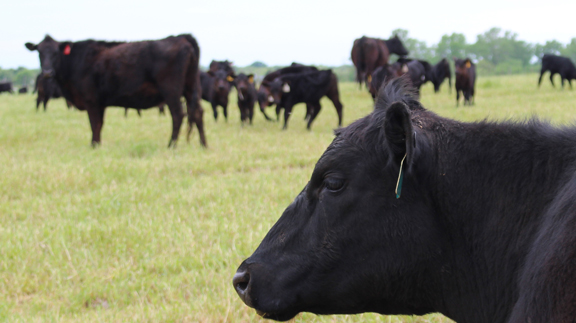Farm & Ranch
Learning the ins and outs of Leptospirosis

By Jessica Crabtree & Dr. Jered Harlan
The term Leptospirosis was applied to the aspiral-shaped bacterium known as Leptospira interrogans of animals and humans caused by numerous distinct serovars.
Such serovars are harbored by a wide range of animals. Leptospira serovars Pomona and Harjo are particularly important in livestock; however, the number of other serovars detected in domestic animals and in humans is growing and causing slight concern to experts.
Leptospirosis sounds like a large, scary word. There are actually two different kinds of Leptospirosis Harjo, called lepto by producers. The two kinds are Leptospira borgpetersenii serovar Harjo and Leptospiria interrogans serovar Hardjo. The bacteria infects through urine and the aftermath of abortion contamination in water sources as well as through infected wildlife.
Moisture is seen as a factor in survival of the bacteria. Lepto typically occurs during spring and summer months while animals prosper in pastures. Vermin or wildlife carry Leptospira Hardjo; however, sheep may carry it and excrete the bacteria, resulting in risk during mixed grazing.
Bovine risk
There are several scenarios as to why animals become infected. As for cattle, producers must be aware during mixed grazing of cattle with sheep, sharing bulls, in open herds and sharing water sources.
To read more pick up a copy of the April 2017 NTFR issue. To subscribe call 940-872-5922.
Farm & Ranch
Hazards of Backyard Poultry

By Barry Whitworth, DVM
Having backyard poultry is a popular agriculture enterprise. According to the United States Department of Agriculture, 0.8 percent of all households in the United States have chickens. People keep chickens for a variety of reasons with table eggs being one of the more common reasons.
Unfortunately, some of these poultry producers are not aware of the hazards that come with keeping poultry because many times they carry pathogens but appear healthy.
Chickens are carriers of several zoonotic diseases. These are diseases that can be passed from animals to humans. According to a recent survey in Pennsylvania, a majority of backyard poultry producers were aware of the dangers of avian influenza. However, this study also revealed that far fewer producers were aware of the risk of possible exposure to Salmonella and Campylobacter.
The lack of knowledge about the hazards of raising poultry likely contributes to the continued issues of Salmonella outbreaks associated with backyard poultry. In 2023, the Centers for Disease Control and Prevention reported 1,072 illnesses of Salmonella linked to backyard poultry, and 272 of those patients required hospitalization. Oklahoma reported 43 individuals with the disease.
To read more, pick up a copy of the April issue of NTFR magazine. To subscribe by mail, call 940-872-5922.
Farm & Ranch
Ag Elsewhere: Wyoming

By Tressa Lawrence
Babies are tucked away in every nook and cranny. Many ranchers across Wyoming have baby animals popping up all over this time of year.
Farm & Ranch
Ag Elsewhere: Montana

By Lindsey Monk
Another load of grain in to keep feeding the calves until the green grass can really start popping.
-

 Country Lifestyles1 year ago
Country Lifestyles1 year agoScott & Stacey Schumacher: A Growth Mindset
-

 Equine7 months ago
Equine7 months agoThe Will to Win
-

 Country Lifestyles7 years ago
Country Lifestyles7 years agoStyle Your Profile – What your style cowboy hat says about you and new trends in 2017
-

 Country Lifestyles4 years ago
Country Lifestyles4 years agoAmber Crawford, Breakaway Roper
-

 HOME7 years ago
HOME7 years agoGrazing North Texas – Wilman Lovegrass
-

 Country Lifestyles7 years ago
Country Lifestyles7 years agoDecember 2016 Profile, Rusty Riddle – The Riddle Way
-

 Country Lifestyles8 years ago
Country Lifestyles8 years agoJune 2016 Profile – The man behind the mic: Bob Tallman
-

 Outdoor9 years ago
Outdoor9 years agoButtercup or Primrose?






